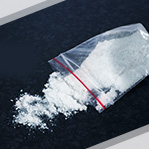Following in the Footsteps of PCP
The rise of PCP abuse, a generation ago, followed a similar pattern as the rise of these new synthetics. PCP, also known as ‘angel dust,’ is classed both as a hallucinogen (causing hallucinations) and a dissociative drug (causing one to lose track of where he really is or who he is). Those hallucinations could include the perception that a loved one is trying to harm or kill the drug user. Or he could think he is capable of physical acts he can’t actually perform, like flying. A dissociative drug causes a disconnection between the person and his thoughts or his sense of identity. A person’s own thoughts or feelings may seem unreal to a person who has taken a dissociative drug. He may lose any sense of his true identity - in other words, temporary acute insanity.

PCP was developed as an animal or human anesthetic but its use was discontinued in 1965 when people coming out from under the drug developed delusions or psychosis. It then slipped into the illicit market where it had disastrous effects. By the 1980s, it was one of the most popular street drugs in the US. Studying the effects of PCP, doctors noted that the drug basically created temporary schizophrenia in some people who used it. The unpredictable behavior, wild swings of mood, hallucinations, and complete deadening of the sense of pain could occasionally create a homicidal monster.
PCP dropped out of use in part because its dangers were widely publicized and became well known. But unfortunately, along with the new synthetics being developed, PCP is now making a dangerous comeback. Unbelievably, it is currently reported to be a principal drug of abuse in Washington D.C. Someone is marketing it heavily, of course. But also, this new generation lacks experience with this class of drug. This phenomenon is being named “generational forgetting.”

 ®
®